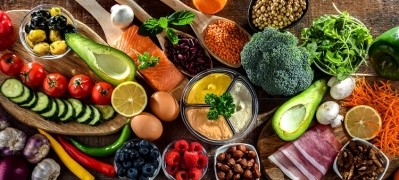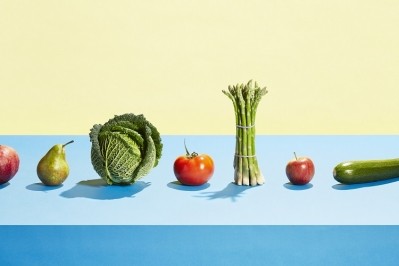The nuts and bolts of factoring CO₂ emissions into Danish diets: ‘We saw a unique opportunity for human and planetary health’

In January of this year, Denmark published its new official dietary guidelines. For the first time, the advice – which replaced that introduced in 2013 – factored in both human and planetary health.
The development process for the new guidelines started back in 2018, when the Danish Veterinary and Food Administration (DVFA) tasked the National Food Institute at DTU with reassessing the 2013 advice with health and environmental sustainability in mind.
The Institute saw combining health and sustainability as a ‘unique opportunity’ to benefit both the planet and Denmark’s population health, recalled its director Christine Nellemann at a recent European Food Forum (EFF) event.
So what scientific research contributed to the decision-making?
Climate impact of foods and diets
To begin with, DTU Food considered the varying climate impacts associated with different protein-rich foods by drawing on Joseph Poore and Thomas Nemecek’s 2018 study ‘Reducing foods’ environmental impacts through producers and consumers’, published in the journal Science.
“Food products from beef or lamb have quite a large CO₂ emission per kilogram of product,” Nellemann told delegates. Looking at other meat products, such as chicken and pork, however, reveals a ‘much lower’ footprint. Lower still are plant-based proteins, and some vegetable oils.
“This is quite a complex field when you look into the different food products,” we were told.
The task became increasingly more complex when the Institute investigated the variances in dietary environmental impacts.
DTU Food observed that by following the dietary guidelines of a western diet, consumers could lower the carbon footprint by between 5-10% and land use by between 5-20%. No change would occur to blue water use, the water on the surface and in groundwater reservoirs, but green water use – rainfall that infiltrates into the soil and is available to plants – could be cut by 6%.
Following another diet, that of ‘inter-food group substitution’ – whereby a climate-friendlier food within the same food group is consumed, for example chicken instead of beef – could cut the carbon footprint by 20%, and land use by between 20-35%.
Plant-rich and vegetarian diets push the environmental benefits even further. When following these diets, consumers would not only substitute food items within the same food group, but incorporate more plant-based foods. Flexitarians would fall under this category.
Under this scenario, the carbon footprint could be reduced by up to 35%, and land use by between 20-50%. ‘Small changes’ could be made to blue water use, and a significant 18% reduction in green water use, Nellemann continued.
And finally, following a vegan diet would drive the most dramatic changes, with a 45-50% reduction in carbon footprint, a 50-55% reduction in land use, and a 26% reduction in green water.
From this data, DTU scientists observed that environmental impacts could be reduced by changing food groups. “But actually, we could do a lot by eating more plant-based food,” said Nellemann.
Preparing the report
The scientists combined research from a variety of sources to create the report, which would then form the scientific foundation for the Danish Dietary Sustainable and Healthy Dietary Guidelines.
Evidence used included not only that concerning the climate impact of foods and diets, but also their nutritional values. Specifically, the scientists looked at the EAT-Lancet reference diet and analysed the Danish food database to determine which foods are consumed locally.
“Then we looked into what foods, and in what amounts, reflect the Danish food culture. We needed to have some local or national or regional work on these dietary guidelines, as I see it, because otherwise we are not going to follow them,” said Nellemann.
The last step was to adjust the nation’s 2013 food based dietary guidelines, taking the scientific evidence, as well as the Nordic Nutrition Recommendations (NNR), into account.
DTU Food submitted its report to the government in February 2020. Stakeholder involvement was then sought from industry organisations, NGOs, and academic institutions, which preceded a consumer survey and a pilot campaign. The official guidelines launched in January 2021.
The results
The published document is made up of seven guidelines, some of which have been altered since the 2013 advice.
In 2013, for example, the guidelines advised Danes to 'eat varied and not too much'. The 2021 update advises Danes ‘eat plant-rich, varied and not too much’.
‘Eat more vegetables and fruits’ remains unchanged from the 2013 version. A 600g portion of these categories combined is recommended.
However, the values for ‘eat less meat – choose legumes and fish’ has been amended. In the latest guidelines, the recommended weekly meat portion has been lowered to 3 x 50g, and 100g of pulses is recommended daily. Concerning fish, 350g is recommended per week.
Elsewhere in the guidelines, the government recommends Danes eat whole grains; choose vegetable oils and low-fat dairy products; eat less of the sweet, salty, and fatty; and drink water.
Additional tips include limiting food waste, and opt for the Keyhole logo – a voluntary nutritional labelling scheme used in Sweden, Denmark and Lithuania carried by products that adhere to standards on fat, sugar, salt, fibre, and whole grain content.
“One of the things I like about this campaign is that no one can do everything, but we can all do something,” said Nellemann. “I think this is what we need as consumers, to feel and think that we can do something. And here are some guidelines that we can use.”
The DTU Food chief also appreciates the ‘guiding’ nature of the campaign, she suggested. It is not restrictive, saying ‘you can only eat this’, an approach she ‘doesn’t think would help’. “But actually, it’s a guiding and helping hand to understand what we can do ourselves.”


























